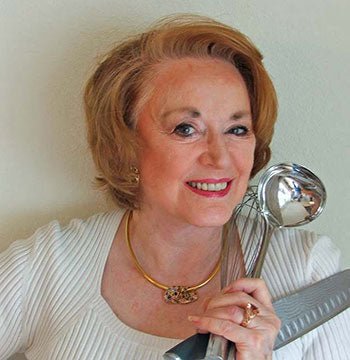 Mock Tikka Masala
Mock Tikka Masala
By Maggie Parkinson*
An easy, fast Indian curry … not authentic but yummy!
When I first came to Seattle as an Indian food lover, I was not happy to find that there was only ONE Indian food in town and when I tried it, they served me a dish with four – yes, four tiny pieces of meat in it. (When I asked if this was a normal serving, they went – “1-2-3-4-YUP!”). I never went back there – I made my own Indian dishes and have done so for many years now.
Now, if you look at a Seattle map showing Indian restaurants, it looks like spines on a hedgehog, and there are many buffets to sample at lunchtime. (-_-)
If you look for the dictionary definition of the word “curry” online, you may find this -“a mixture of spices that are used in Indian cooking to give a hot flavor to food.”
Well, that’s certainly ONE way of looking at it – it also means “to clean the coat of (an animal, such as a horse) with a currycomb.”
Well – whaddya know! And I would like to add that I take issue with the term HOT – my favorite curries are not at all hot and certainly not as steamy as many a bowl of chili … popular myth exploded number one. Curry is as hot as YOU want it to be … so there.
If you think of the term “bread,” it is used to cover literally dozens of ways of whipping up variations of flour, yeast, nuts, spices, herbs and – and – to come up with the carb-loaded creation that almost all of us love so much.
The same can be said for “curry,” and certainly it is misleading to imply that this is a prerogative (whoo! big word), of the country India. Many other countries have their own versions of curry: China, Thailand, Malaysia, Vietnam etc. I make my own Vietnamese curry powder, having discovered that it is more fragrant than Indian dishes and equally palatable.
As I understand it, much of the heat in curry powders and recipes, emanated from the need to preserve food in hot climates before refrigeration, and – as sweating cools you down; you are hereby encouraged to tell me I’m full of it, on that score.;
It is true that if you look up “butter chicken” on a favorite recipe-sharing site, you will find a big handful of variations of it … AND the relatively new Indian restaurant that opened in my small town miles from a big city is doing GANGBUSTER business.
This tells me something – people are not only interested in consuming “curry” but they’re also starting to cook it at home, too. So today’s piece is a relatively simple and certainly QUICK meal you can make yourself. Before we begin, let’s just talk about “curry powder.”
I have not used “curry powder” in this recipe for one simple reason and that is to give you predictable results. There are more “curry powder” variations than you can shake a stick at, and I don’t want you having to shop for MY brand of it. I do use it often and it’s all good – but I always add a combination of spices similar to those I am calling out today. The same can be said for another blend called GARAM MASALA, but you won’t go far off with any version of this which you buy or have. I discovered a big bag of spices in one of my international stores at one point and have long been grinding my own, as it’s cheaper. (Fanny Frugal is my alternate ego.)
So, what kind of curry are we going to cook today? It’s actually a very generic kind of curry which can be taken in many directions and is similar to the famous dishes – Butter Chicken, Chicken Korma, Chicken Tikka Masala.
This latter is so popular in Britain (where there is a curry place in EVERY TOWN and on every high street), that I swear I saw it in the deli of a local supermarket to buy by the pound! Some of the best Indian food I ever had was in a small town in Scotland, where the waiter who looked very Indian came up to us and invited us to proceed to the “starters” buffet with a broad cockney accent… one of the Pirate’s favorite anecdotes. (Note: the Pirate is Maggie’s lucky husband.)
CHICKEN TIKKA is basically a simple recipe for marinated chicken (in yogurt and spices) cooked on skewers.
MASALA is a term for a blend of spices – as in Garam Masala that we have already mentioned. HOWEVER, Chicken Tikka Masala always comes with a SAUCE and hence, in my view, the masala term has been somewhat corrupted to mean the saucy part in common parlance.
The British are addicted to gravies and I believe that this dish became popular because it comes with one. (I used to live near an awesome Indian restaurant where the chef’s motto was-“It’s all in the gravy.” I kid you not, and his were fantastic. I spent many years trying to reproduce his dish called LAMB PASANDA and finally figured it out.)
So – let’s get to it … This is not authentic and you’ll see why, in a minute – it’s just something I developed and like … and it has a MOST unusual ingredient which works!
Maggie’s Version of Chicken Tikka Masala
NOTE: This can be made with supermarket rotisserie chicken – not as good but a great leftover dish. I made this one with leftover pork!
Ingredients: (In these ingredients: t= teaspoon, T = tablespoon)
Chicken pieces – as much as you need: Breast chunks, boned thigh portions in pieces or leftover cooked chicken or other leftover meat. (Indians do not eat beef, but you can if you choose.)
One good sized onion, chopped – about two cups
2 cloves of garlic, smashed or chopped
1 inch piece of fresh ginger, chopped or grated. (I freeze my root and grate it.)
1 ½ t ground cumin
1 ½ t ground coriander
1 t garam masala
1 T generic chili powder (not cayenne – I mean the stuff you make chili with)
½ t smoked paprika
1 can condensed tomato soup ***
½ cup whipping cream
Salt and pepper
Optional: ¼ t cardamon powder, ¼ t fennel powder
*** I like my curries to have a touch of sweetness to offset the heat. If you wish, you can substitute a can of chopped tomatoes or an equivalent sized can of tomato sauce.
Method:
Chop the onion and sauté the pieces in a little oil until they are soft.
Add the ginger and garlic and stir for another minute or so.
At this point, add the spices: cumin, garam masala, coriander, paprika, chili powder (Typically garam masala is added at the end but – when do I ever follow trends?)

Stir everything together and add in your raw chicken. (Wait until later if you have cooked meat.)
Once your chicken is cooked, add the whole can of tomato soup.
Stir to combine and then add the cream.
At this point, add the cooked meat if using leftovers.
Season with salt and pepper. NOTE that I didn’t do this until the end, as canned soups are notoriously heavy on salt.
Now taste: It’s really good-thick and fragrantly luscious. I put mine into a vacuum-happy container to save for a few days – it gets better after a sit in the fridge, like soup.

I like my curries to be redolent (another snobby word) with flavor, so I then added the optional fat pinches of cardamom and ground fennel seed. You can, too, but try it first and see if you like the version without. It’s all up to you as is the heat in this dish. If you like “the burn,” start heating it up now. I don’t differentiate when it comes to “hot” as in spicy heat levels. While there are HUNDREDS of items in my kitchen (and three fridges) of culinary things, I have very few that add heat – my tongue can’t tell the difference between: sriracha, chili flakes, sambal oelek, chili sauce, cayenne, (I lied, I do have all of those and hot bean paste too! Ahem. ) Choose your favorite and go for it! If anything you eat is too hot – the antidote is NOT milk – it’s something sugary … milk just makes it worse!
Once you have garlic, ginger and the above list of spices, you can make many variations of curry. Try the curry without the tomato and add coconut milk for something more akin to a Korma. You can also add yogurt instead of the cream.
Eat this with fresh or bought NAAN bread and maybe some SAAG which is here – https://cheesemaking.com/blogs/fun-along-the-whey/saag-paneer-with-maggie-parkinson
Well – have we made you another convert to curry yet?
Blessings and as always………….
Thanks for reading.
Maggie
* About the author:
 Maggie Parkinson is the author of the low-carb cookbook: Carb-Less in Seattle. We did an interview with her in 2013 (click here). Since then, she has moved from Renton to Poulsbo, Washington where she and her husband (The Pirate) built a beautiful home with gardens and an orchard.
Maggie Parkinson is the author of the low-carb cookbook: Carb-Less in Seattle. We did an interview with her in 2013 (click here). Since then, she has moved from Renton to Poulsbo, Washington where she and her husband (The Pirate) built a beautiful home with gardens and an orchard.
Maggie has had many lives – as an actress, a playwrite, a seamstress, a knitter, an author and an IT administrator at Boeing for over 20 years. She is retired now, but she is still as creative as ever, and willing to share her expertise.
She has given us several fabulous (original!) recipes including Pizza, Saag Panir, Pear & Fig Bread, Fromage Fort, Easy Bechamel Sauce, Macaroni & Cheese, Stretching the Waistband of Your Food Budget, Leftovers-Waste Not/Want Not So Much and Souped-Up Soup. Her skill as a cook makes her tips invaluable to us and we hope you enjoy them as much as we do.














































































































































